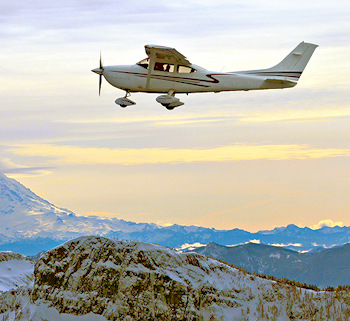Subscriber question:
"Am I susceptible to hypoxia at 10-12,000 feet? I regularly fly at these altitudes but am not required by regulation to use oxygen." - Chris O.
John:
 “The problem with hypoxia is that by the time you are experiencing it, your cognitive ability may be so impaired that you can’t recognize the symptoms and take the appropriate action.
“The problem with hypoxia is that by the time you are experiencing it, your cognitive ability may be so impaired that you can’t recognize the symptoms and take the appropriate action.
The FARs for Part 91 pilots only require that supplemental oxygen be used after 30 minutes of exposure to altitudes between 12,500 and 14,000 feet. But consider that pilots for hire (Part 135 and 121) are required to use oxygen above 10,000 feet. I would favor the conservative approach that professional pilots are required to adhere to and use supplemental oxygen anytime above 10,000 feet.
If you regularly fly at altitudes above 8-10,000 feet, you should invest in a pulse oximeter. These relatively inexpensive devices clip onto a fingertip and read out blood oxygen levels.
The minimum blood oxygen level you should see is 90%, anything less than that means you need to either use oxygen or descend to a lower altitude.”
Here’s a quick quiz on hypoxia from the Air Safety Institute.
What is the lowest altitude you've experienced symptoms of hypoxia?
Hypoxia is a state of oxygen deficiency in the body sufficient to impair functions of the brain and other organs. Symptoms include headache, dizziness, confusion, shortness of breath, restlessness, changes in skin color.
